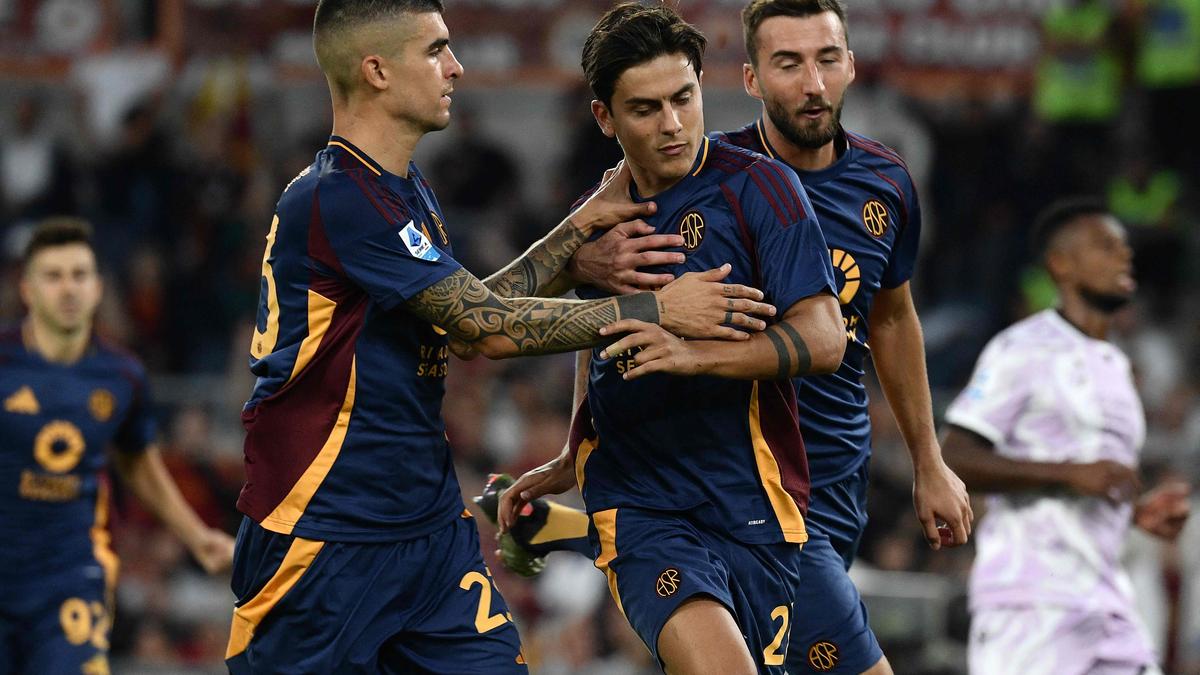Ah, the best Leica cameras. Expensive? Undoubtedly. But there’s just something so undeniably classically cool about that red dot and the sleek, perfectly engineered cameras it gets attached to, and that’s how the brand has retained its cachet among photographers for decades.
We review Leica cameras just as we do new releases from other brands, and while we always have to acknowledge that their prices make them niche propositions for only the most well-heeled of enthusiasts, the experience of shooting with one is quite simple unlike anything else. Whether you go for a compact Q camera, a digital rangefinder like the M11, or an L-mount mirrorless model, you’re going to be getting a camera that oozes style and quality. This list includes not just the best new Leica cameras, but also a few previous-generation options that have seen price reductions.

All these are cameras that have been tested and highly rated by our review team – so, let’s get a closer look. And for more high-end options, check out our guide to the . For lovers of minimalism in camera design, the Leica M series is a classic.
The latest digital iteration of a series that harks back all the way to 1955 brings a number of number of innovations in a sleek and traditional body. It boasts a 60 megapixel sensor, but, since that can eat up a lot of processing power, if you want to make things a little quicker, you can choose to output raw files at 36 or 18 megapixels instead, allowing you to choose the best resolution for the situation. In our review, we found that, like other M series cameras before it, the M11 uses an ultra-robust design which is simply lovely to look at, as well as to use.
Using a rangefinder takes a bit of getting used to – manual focusing via the viewfinder doesn’t always yield perfect results, particularly if you’re used to shooting with more modern techniques, but it’s special if you do nail it. We found that the M11 was capable of producing superb images, and if you really do want the best of the best – and have the budget to go with it, this is a camera that is surely at the top of many a photographer’s wish list. Another two notable stablemates from the M11 line up are the recently announced the with the rear LCD screen replaced in favour of a large ISO dial, inviting you to focus on the act of photography, and the hardware added.
Leica’s Q series of compacts can essentially be considered a very (very) upmarket version of Fujifilm’s classic cameras, pairing a high-quality sensor with a fixed 28mm lens. However, while this description is factually correct, it doesn’t really do justice to the addictively sublime experience of actually shooting with one – and the Leica Q3 is the best yet. Like the M11, it incorporates a 60MP sensor that also offers shooting in 36MP and 18MP for those times you don’t need all that resolution.
However, it’s not exactly the same sensor, as on the Q3, Leica has incorporated phase-detection pixels. This makes the autofocus much, much quicker than it was on the Q2 – Leica claims up to five times’ quicker. The camera also incorporates intelligent subject-detection modes, and thanks to Leica’s ongoing strategic alliance with Panasonic, it can also make use of Panasonic’s good old-fahsioned Depth from Defocus autofocus system to build a ‘depth map’ of a scene.
Leica even threw in the ability to shoot 8K video (though somewhat oddly given this fact, there’s no mic socket). When you combine all this with the superb stabilised 28mm f/1.7 lens, the fast burst modes, the well-laid-out control scheme, and the many other exciting new features like intelligent Dynamic Range (iDR) and Perspective Control, it becomes clear what a powerhouse the Leica Q3 is.
Best compact ever? We’re hard-pressed to say otherwise...
Read our full Powerful enough to stand to-to-toe with the biggest and best full-frame cameras (which is good news, since it’s more expensive than any of them), the Leica SL3 packs in the same 60MP sensor with phase-detect autofocus as the Leica Q3. This means it’s got that same brilliant blend of high speed and outstanding image quality. Its mirrorless body is built like a tank, shaped like an SLR and rated to IP54 for its weatherproofing and water-protection (it’ll handle spray but not submergence).
Its various upgrades and features make the SL3 a more serious player in the pro mirrorless market than its predecessors in the SL series ever were. Yes, the Sony A7RV can do all the same stuff for less money, but the SL3 is markedly more pleasant to use. The Nikon Z9 may be better for action, but there’s still an undeniable cachet to turning up to a job holding a Leica.
The L-mount lens selection is excellent now, and given that. theSL3 can also use M-mount and legacy R-mount Leica lenses, you’re never going to be short of quality glass. Read our full .
Leica may have seemed bonkers at first when it announced it would be producing expensive versions of its digital cameras with no colour filter at all – meaning they would only be capable of producing black & white imagery. However, the concept has proven engagingly popular with a certain type of shooter, and the Leica M11 Monochrom is the best example of the concept yet. If you’re the type of person willing to drop $9195 / £8300 on a monochrome-only camera, then you’ll be pleased to know that this one is a triumph.
Ultimately, a thing like this lives or dies on its image quality, and the superb 60.4MP resolution produced by the Leica M11 Monochrom is knockout, drop-dread gorgeous. Like the Q3 and M11 classic, the resolution can be dropped down if you don’t need all those pixels – though Leica has cannily built in 256GB of built-in internal storage to help matters.
The camera can shoot up to ISO 200,000, and its performance even at higher settings is commendable. An advantage of black & white is that image noise is more likely to look like stylish film grain, and so is the case here. Read our full .
The D-Lux 8 employs a smaller Four Thirds type sensor with a clever multi-aspect ratio design, joined by a . It’s in much the same price bracket as the X100VI, at vs $1,599 / £1,600. It has traditional photographer-friendly controls for the main exposure settings, and a corner-mounted viewfinder in a flat-bodied ‘rangefinder-style’ design, which make it a joyous thing to use.
This camera utilises its in a unique way. It never uses the entire sensor area to create images, but instead crops in to offer with the same diagonal angle of view. See how this works in .
The zoom lens provides a good level of compositional flexibility, and our reviewer really appreciated changing aspect ratios via a switch on the lens. It’s great to see an improved viewfinder, too, which fixes one of our biggest gripes with the LX100 II/D-Lux 7. Released under the umbrella of the “L Mount Alliance” between Leica, Panasonic and Sigma, the SL2 shares a lot of similarities with the .
As such, you get a high-resolution 47.3 megapixel full-frame sensor and a swathe of other useful specifications including up to 20fps shooting (via the electronic shutter), a superb viewfinder and 5-axis in-body image stabilisation. This is a big and chunky mirrorless camera that feels like a solid workhorse.
In our review of the SL2, we noted that it was bulkier and heavier than many of its mirrorless rivals, being more akin to a pro-level DSLR in design. That might be a good thing if you’re looking for something that can withstand some heavy abuse, while others might find it too cumbersome. We were generally impressed by the SL2’s autofocus performance, while image quality we found to be be ‘phenomenal’.
There’s a lot to like about the SL2, but if you’re short on budget, it’s worth considering whether the Panasonic S1R is the wiser investment. Like the look of the but fancy something which is a bit more of an all-rounder (and slightly more affordable)? Step forward the SL2-S. Unsurprisingly, as part of the L Mount alliance, this is another model which shares a lot in common with a Panasonic offering, the S1.
With its 24.6MP sensor, it’s pitched as more of a video/photo hybrid and can also achieve other useful specifications such as (up to) 25fps shooting. The SL2-S uses the same body design as the SL2, so again, this is a bulky and chunky affair, which some will love and others will loathe.
In our review we were particularly impressed with the “stunning” viewfinder, while the screen is impressively responsive to touch – it’s a bit of a shame it’s fixed though, especially if you do want to use the camera for video work. We found that the SL2-S’s autofocus was decent, though we probably wouldn’t select this camera as the best option for sports and action photography (we’d look to other brands), but it’s a good all-rounder for those that like to shoot a bit of everything. Image quality is great, but we found that the best results are seen when shooting in raw.
Again, you might want to question whether you’d be better off with the Panasonic S1 if this kind of model appeals to you, but that little red dot can be extremely tempting. Designed specifically for photographers who want the best possible black and white image quality, the Leica M10 Monochrom is a beautiful camera inside and out. It’s a relatively cheaper option than the newer M11 Monochrom, so is worth considering if that camera is out of your budget.
Prices have come down quite a bit on the used market, especially in the UK, to the point where it can be picked up for about half the price of the newer model. We found in our review that it was capable of delivering exceptional image quality, with a sensor that is stripped of colour being better suited to detail, higher dynamic range and superior performance in high ISO, low light situations. The body design and quality of build also impressed us in our review, and although shooting with a rangefinder is perhaps an acquired taste, using the M10 Monochrom is overall a very pleasant experience.
Leica cameras are already designed for a niche market, and this one even more so – but boy does it produce beautiful results. If you’ve got this kind of cash to spend it’ll almost certainly bring you a fantastic amount of joy. Although pretty much every Leica evokes the nostalgic in all of us, if you want to really turn back the clock then nothing does that like the magic of analogue.
in October 2022, and it’s proved to be incredibly popular ever since – so much so that there’s currently a waiting list to get hold of one. Based heavily on the original M6, new features include a redesigned top cover which has been milled from solid brass and enhanced with an abrasion-resistant lacquer. Fancy.
The viewfinder has also been optimised, the light meter has been improved and there’s now a useful battery warning indicator. This is a camera that doesn’t get cheap – of course it doesn’t, it’s a Leica, but if you want the same kind of experience as the street photography masters of old, then nothing quite beats it. Boasting a range of features including a super-high resolution 47.
3 megapixel full-frame sensor, the may be a slightly niche choice thanks to its fixed 28mm f/1.7 lens, but the quality of the outputted images is simply superb. We’re also a little bit in love with the design, which takes the classic rangefinder approach, with an electronic viewfinder placed in the corner of the body.
The upside here is that it’s not a rangefinder, so you don’t have to worry about fiddling around with manual focusing if you’d rather just let the camera get on with it. The Q2 would make for a fantastic travel, street and everyday camera. Despite its fixed lens (that high resolution sensor means you get a very usable digital zooming options), it’s stylish, discreet and produces knockout imagery.
Just as Leica produced , it did so with the Q2 Monochrom. The idea is, once again, that you get all the benefits of a particular type of body, but with a sensor that is specifically designed for monochrome shooting and therefore capable of producing better imagery than shooting in colour and later converting. Most of the specification of this camera is shared with the Q2 on which its based, including the same 28mm f/1.
7 fixed lens with digital zooming options and the same viewfinder and screen. However, by stripping out the colour from the 47.3 megapixel full-frame sensor you get distinct advantages for dynamic range, detail, and low-light shooting.
In our review of the Q2 Monochrom, we were impressed by its intuitive controls, customisation options and, naturally the superb image quality it produces. This is, even by Leica standards, a niche option for a camera, but if B&W is your forte and you have the money to spend on it, you certainly won’t be disappointed. When considering which Leica camera is the best option for you there are a number of things you might want to consider, including the following: Leica currently manufacturers a range of different types and styles of cameras.
As well as offering the latest mirrorless technology in the shape of its SL range, there’s also rangefinder cameras which are a traditional technology which won’t be suited to every type of user. With these models, you can only manually focus, and you generally have to get used to shooting in a certain way through an optical viewfinder. Leica also offers premium compact cameras, film cameras and even bridge-style cameras.
What is right for one person might not necessarily right for the next, but it pays to do some research on each type of camera before you commit to buying one – especially if you’ve never invested in a Leica before. What it might simply come down to is your preferred way of focusing. If you want to shoot rapidly moving action, manual shooting isn’t generally preferred by modern photographers.
As such, standard mirrorless cameras or even the premium compact options from Leica will probably offer you the best experience. On the other hand, manual focusing is favoured by some for its more slower, more considered approach. You also have more complete control over very aspect of the shooting experience, which can be appealing for many.
Most of us shoot digitally these days, and indeed the vast majority of the cameras on this list are digital offerings. However, there’s still something very special about shooting film with analogue cameras. There’s lots of analogue Leica models available, particularly in the second-hand market.
Interestingly, Leica is just about the only major or big manufacturer still announcing new film models today, with . If you’re keen for maximum flexibility, then opting for one of Leica’s interchangeable lens cameras makes the most sense. That means going for an SL or M series if you’re picking up a new Leica for the first time.
Both offer a good range of compatible lens options, with the SL cameras also being able to accept Sigma and Panasonic lenses as part of the “L Mount Alliance”. On the other hand, using a fixed lens is a lot more straightforward. That’s where cameras such as the Q2 range or the D-Lux range come in.
Take a look at all the options and think about what will work best for you. While it’s true that “Leica” and “low cost” aren’t usually seen in the same sentence, if you want the Leica experience without the high price tag, there are some options you can look towards. For example, the D-Lux 7 is the cheapest model on our list, but you still get that prominent red badge.
There’s also different models within the various Leica ranges which could save you some cash if you opt for the older or less advanced versions (SL2 vs SL2-S for example)..




















